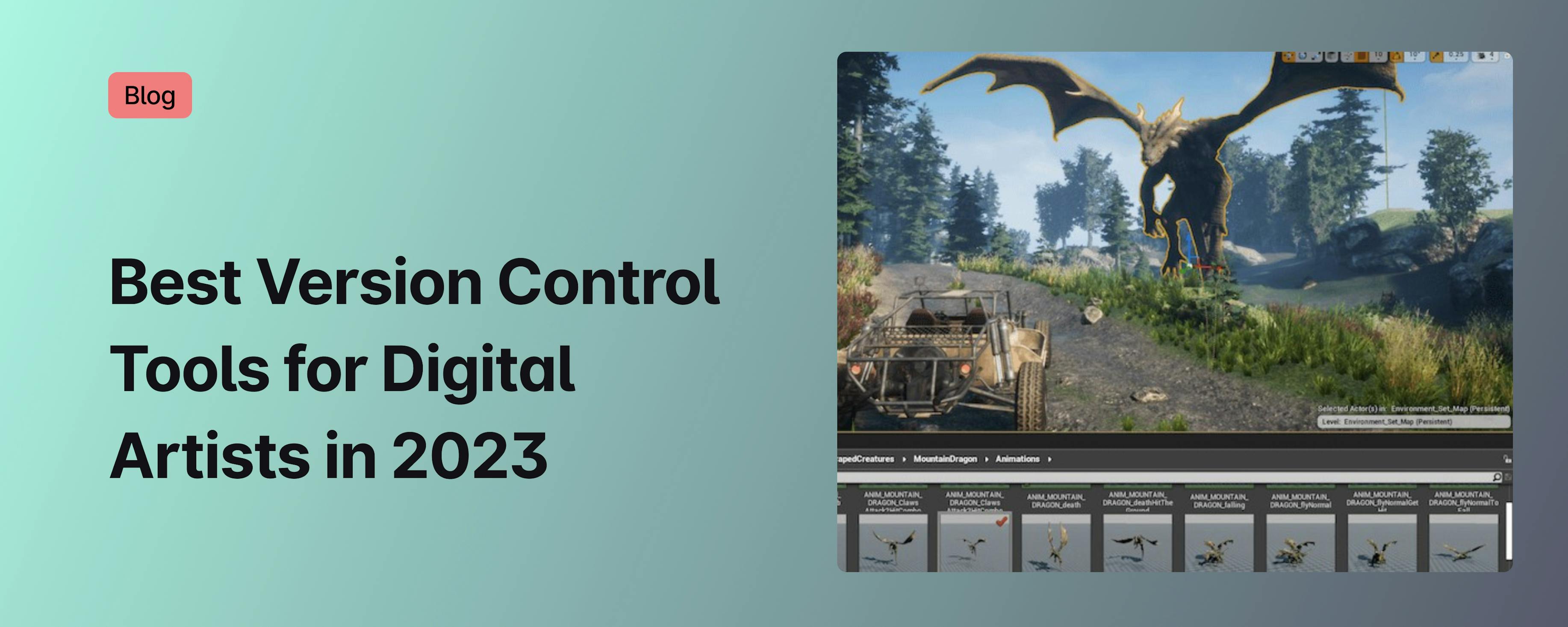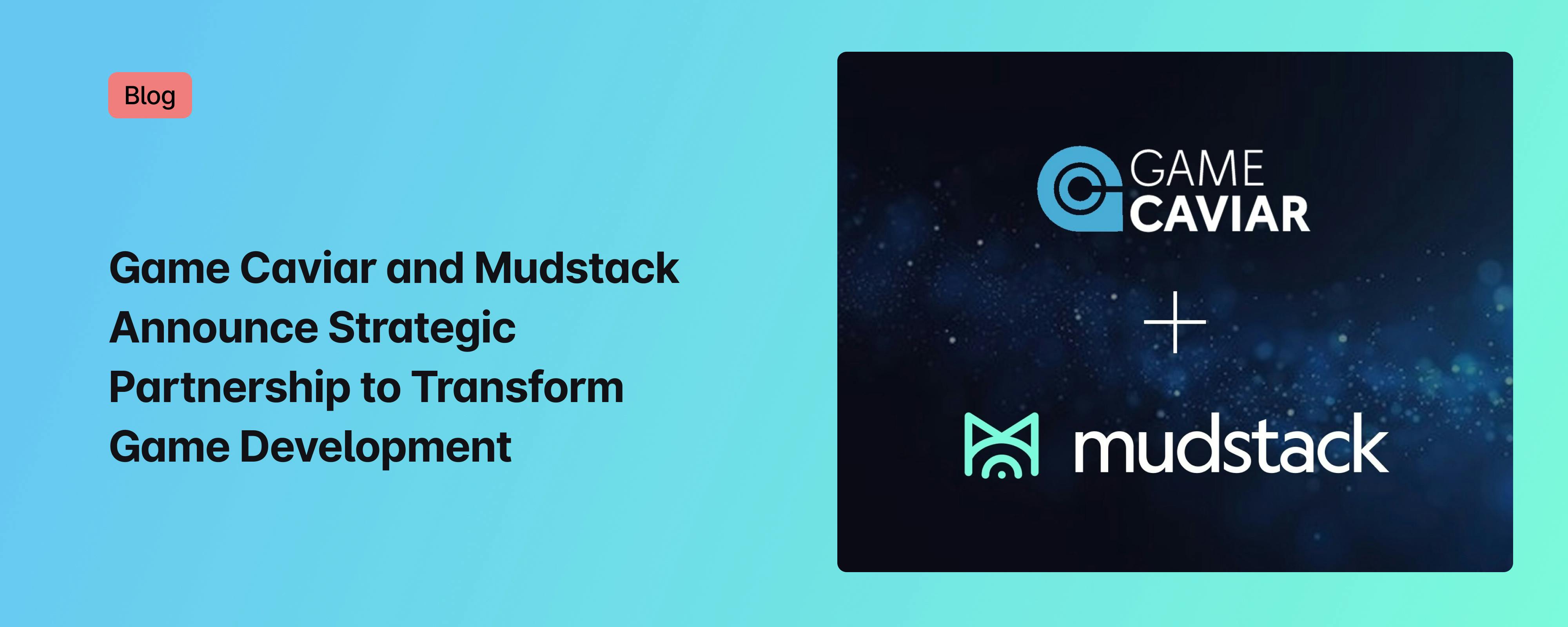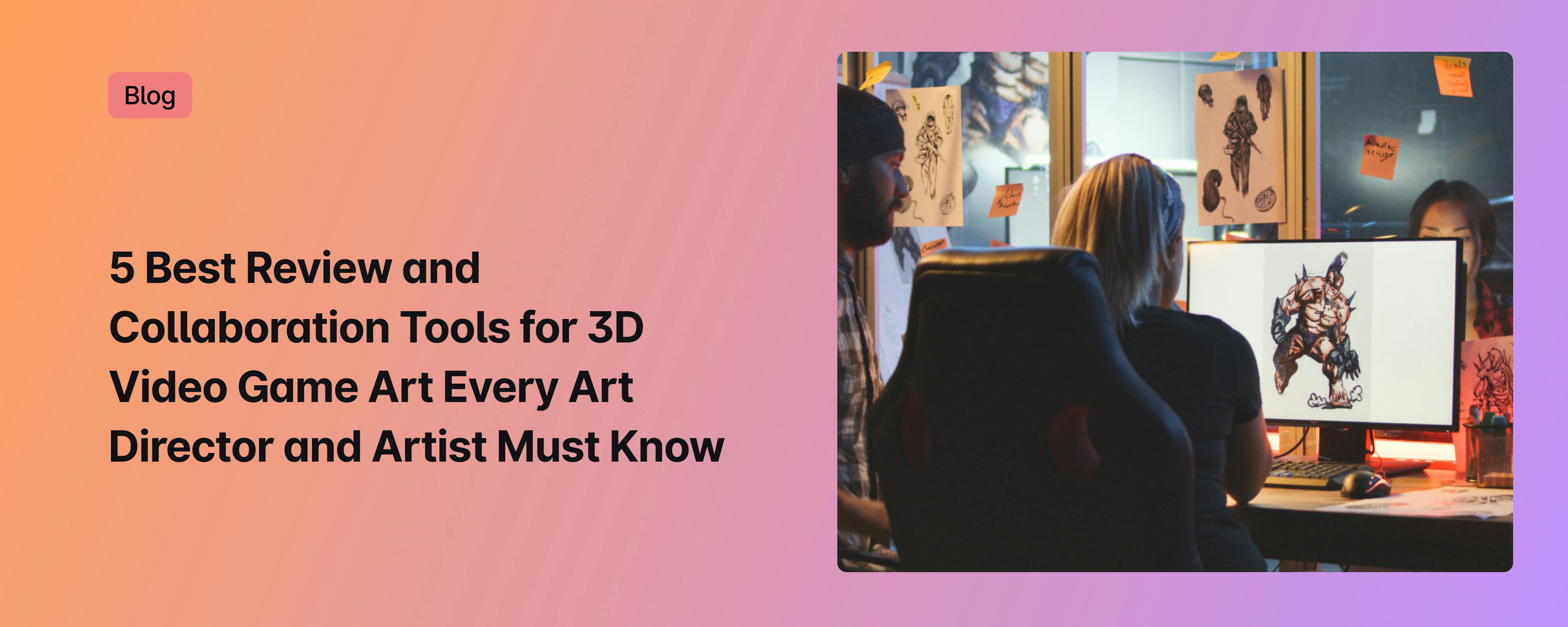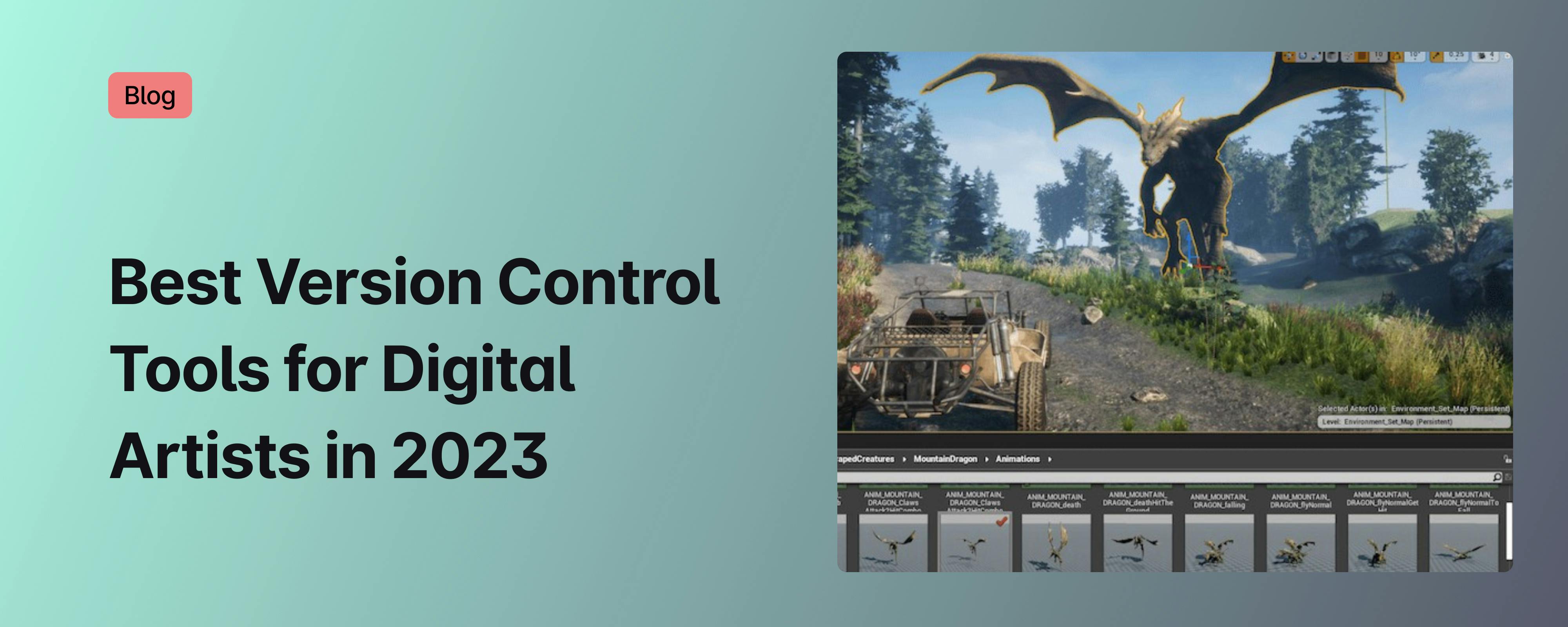Best Version Control Tools for Digital Artists in 2023
Elevating the Workflow of Modern Game Studio Artists


In today's rapidly transforming digital landscape, game studios are seeking advanced solutions to streamline their design processes. Dive into how art-focused version control tools are not just a game-changer but an essential asset, optimizing workflow and propelling the gaming industry into a new era of innovation.
Introduction to Version Control for Digital Artists
Ever looked back at your art and wished you could revisit a previous version? Enter the world of version control. Think of it as a time machine for your creative projects.
Why Artists Need Version Control?
Art is not just about creation; it's about evolution. And with evolution comes iterations. Here are just a few reasons why version control is a necessary feature for every digital artist’s workflow.
Protecting Work
Imagine losing hours of hard work due to a system crash or accidental deletion. Terrifying, right? Version control acts as a safety net, ensuring that every version of your artwork remains intact.
Collaboration
Collaborating on a piece? Version control allows multiple artists to work simultaneously, merging their contributions without any hiccups.
Evolution and Progress Tracking
Want to show your growth over time? With version control, you can track each modification, providing a step-by-step playback of your artistic journey.
Version Control vs. Traditional Backup Methods
Remember those folders named "final_v1", "final_v2", "final_reallyfinal"? Not only is it confusing, but it’s inefficient. Unlike traditional backups, version control provides a streamlined and organized approach to saving multiple versions of a project.
3 Features to Look for in Version Control Software
User-Friendliness
As an artist, you want to focus on your craft, not spend hours figuring out complex software designed for managing code. A user-friendly interface is not just convenient, it is essential for any art team.
Collaboration Capabilities
Art isn't always a solo journey. A good version control tool must promote collaboration, allowing multiple contributors to work without friction.
Storage Capacity
With high-resolution artwork, storage can quickly become an issue. Ensure your chosen software can handle the weight of your masterpieces.
Best Version Control Tools and Software in 2023
A slew of version control tools and software have emerged, each boasting unique features tailored to various needs. Whether you're a solo artist or part of a large game studio, the best version control tools of this year are crucial assets, designed to streamline workflows, bolster productivity, and foster creativity. Here are a few of the best version control tools available to you:
Git for Artists
While originally designed for code, Git has become increasingly popular among artists, especially when paired with platforms like GitHub or GitLab. Visual integration tools make it easier for artists to navigate and use.
Pros
- Universally Recognized: Widely used and recognized, making collaboration easy.
- Free: Open-source and available at no cost.
- Visual Tools: Third-party tools are available for a visual representation of changes.
Cons
- Steep Learning Curve: This can be complex for beginners and those unfamiliar with markdown.
- Not Tailored Specifically for Art: Originally designed for code, which means it might lack some artist-friendly features.
Plastic SCM
Specially designed for large files and projects, Plastic SCM is the go-to for artists working with heavy multimedia files. Its graphical user interface (GUI) is a visual treat, making versioning a breeze.
Pros
- Handles Large Files: Efficiently deals with large multimedia files.
- Merge Tools: Offers sophisticated merging capabilities.
- Tailored for Multimedia: Better suited for artists compared to some other systems.
Cons
- Price: Might be costly for individual artists or small teams.
- Overkill for Small Projects: The extensive features might be unnecessary for smaller art projects.
Perforce Helix Core
A powerhouse in the gaming industry, Perforce is known for handling large art assets smoothly. Its robust nature ensures that artworks, regardless of their size, are safely versioned.
Pros
- Industry Standard for Gaming: Widely used in the gaming industry.
- Robust for Large Assets: Can handle very large files with ease.
- Security: Offers advanced security features.
- Collaboration: Supports large teams working on extensive projects.
Cons
- Complexity: Might seem overwhelming for individual artists or smaller teams.
- Costly: The premium features come with a higher price tag.
mudstack
This innovative platform is tailored for artists, helping them manage and version their work efficiently. With a user-friendly interface and effortless integration into artists’ workflows, mudstack is becoming a favorite among digital artists.
Pros
- Tailored for Artists: Designed as an artist-first tool fitted to their specific needs. Free for artists!
- User-friendly Interface: Easy to learn, navigate and understand.
- Collaboration Tools: Enables artists to work together across remote teams asynchronously. Review and feedback are coupled at the file level.
Cons
- Newer on the Scene: Might lack some advanced features present in more established tools.
- Limited Tutorials and Resources: Being newer, there might be fewer community resources and tutorials available.
ShotGrid
Previously known as Shotgun, ShotGrid by Autodesk is a project management tool designed for the entertainment industry. It streamlines the production process, offering version control features that help artists and teams stay on top of their work.
Pros
- Entertainment Industry Focus: Specifically designed for the entertainment industry's needs.
- Project Management: Beyond version control, offers extensive project management tools.
- Collaboration: Seamless collaboration features.
Cons
- Cost: Can be on the pricier side for individual artists.
- Complexity: The wide range of features might be too much for solo artists or smaller teams.
The Rise of Art-Focused Version Control Tools
Art-focused version control tools don't just store different versions of artwork. They provide a comprehensive view of an artist's journey. Features like visual comparisons, annotations, and collaboration tools are now becoming the industry standard. Artists can now see a visual timeline of their progress, making it easier to spot mistakes, make design decisions, or even share their creative process with fans or clients.
The rise of art-focused version control tools is just the tip of the iceberg. As augmented reality (AR), virtual reality (VR), and other immersive art forms gain traction, the need for more advanced, art-specific versioning tools will only grow. The future might see these tools incorporating features like 3D previews, VR walkthroughs of design changes, and even more innovative solutions to enhance the workflow of the modern digital artist.
FAQs
Q1: Why can't artists use traditional backup methods?
A: Traditional methods can be confusing and inefficient, especially for larger projects. Version control provides a streamlined approach.
Q2: Do all version control tools offer collaborative features?
A: Not all, but most modern tools recognize the importance of collaboration and offer features to support it.
Q3: How do version control tools handle large art files?
A: Many tools, like Plastic SCM and Perforce, are designed to manage large files efficiently.
Q4: Is version control a costly investment for individual artists?
A: Not necessarily. While some tools are premium, there are many affordable and even free options available.
Mudstack is the only asset management and collaboration platform custom-built for game studios and digital artists.
Mudstack is dedicated to improving asset management and collaboration together. You can join our Discord channel to speak directly with our product team or schedule a demo to show us your art production pipeline and see our software in action.



